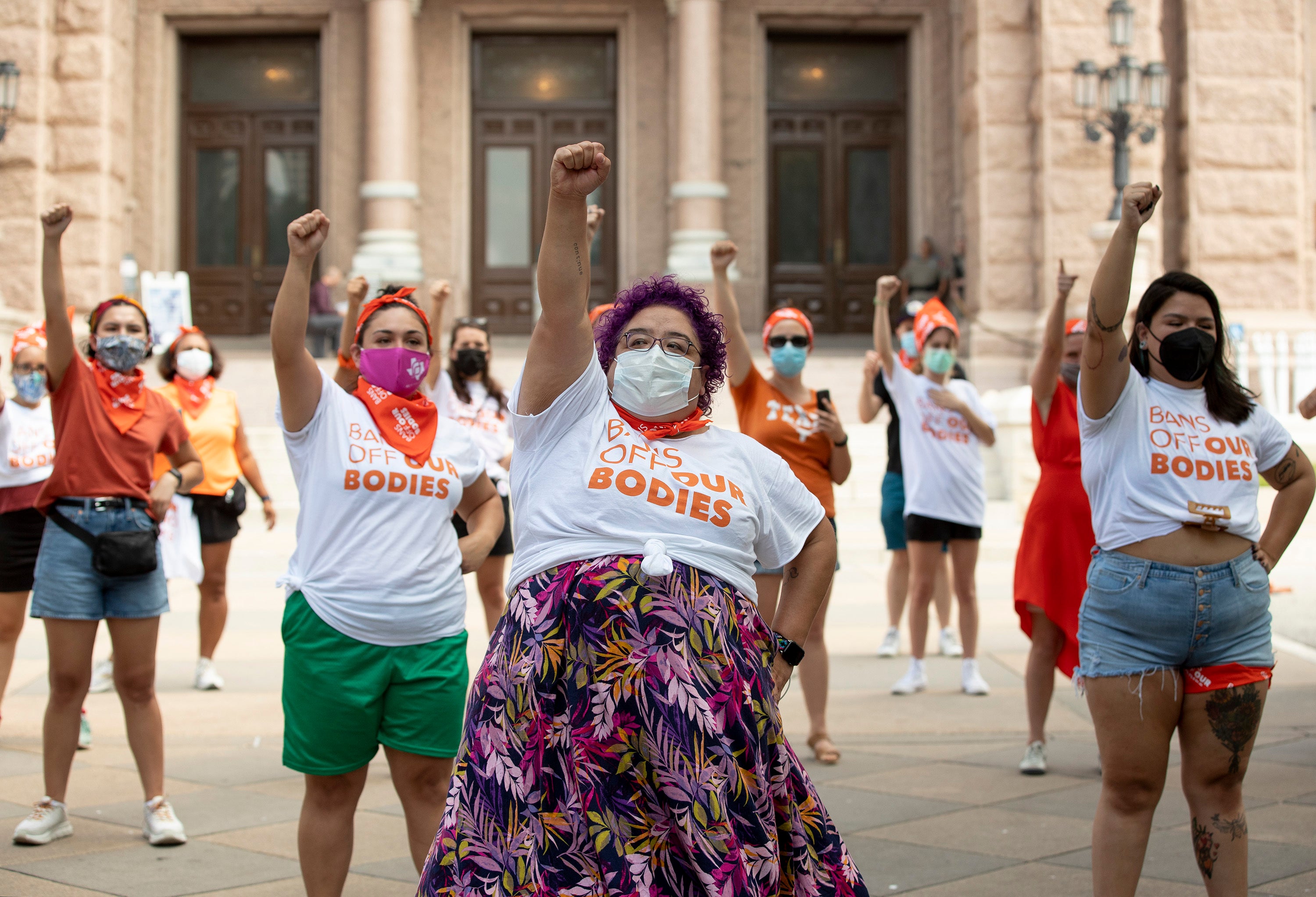Timeline of events surrounding Texas' ban on most abortions
Texas has banned most abortions since early September under a law that has created the biggest curb to abortion in the U.S. in nearly 50 years

Your support helps us to tell the story
From reproductive rights to climate change to Big Tech, The Independent is on the ground when the story is developing. Whether it's investigating the financials of Elon Musk's pro-Trump PAC or producing our latest documentary, 'The A Word', which shines a light on the American women fighting for reproductive rights, we know how important it is to parse out the facts from the messaging.
At such a critical moment in US history, we need reporters on the ground. Your donation allows us to keep sending journalists to speak to both sides of the story.
The Independent is trusted by Americans across the entire political spectrum. And unlike many other quality news outlets, we choose not to lock Americans out of our reporting and analysis with paywalls. We believe quality journalism should be available to everyone, paid for by those who can afford it.
Your support makes all the difference.Since early September, Texas has banned most abortions under a new law that has created the biggest curb to abortion in the U.S. in nearly 50 years.
Texas clinics have spent months asking courts to halt the the law, known as Senate Bill 8, which bans abortions once cardiac activity is detected. That is usually around six weeks, which is before some women even know they are pregnant.
The U.S. Supreme Court on Friday again allowed the law to remain in a place in a ruling that allows abortion clinics to continue their legal fight. In the meantime, most abortions in Texas are still banned.
Here is a timeline of key events so far:
____
MAY 19: Republican Gov. Greg Abbott signs the law in a ceremony at the Texas Capitol that is closed to the press and public. The law is solely enforced by private citizens, who are entitled to $10,000 in damages if they successfully sue abortion providers.
JULY 13: Texas abortion clinics sue in federal court in Austin
AUG. 25: U.S. District Judge Robert Pitman, an appointee of President Barack Obama, denies Texas' efforts to dismiss the lawsuit.
AUG. 27: The 5th U.S. Circuit Court of Appeals orders a halt on the lawsuit in Austin, eventually leading abortion clinics to ask the U.S. Supreme Court to intervene.
SEPT. 1: The law takes effect. Late that night, Supreme Court issues a 5-4 decision allowing the law to remain in place, without ruling on its constitutionality. Texas abortion clinics say they will abide by the restrictions.
SEPT. 6: Defending how the law makes no exceptions in cases of rape or incest, Abbott says Texas would strive to “eliminate all rapists from the streets," drawing swift criticism. He also falsely asserts that women have “at least six weeks" under the law to get an abortion.
SEPT. 9: The Justice Department sues Texas, saying the law was enacted in “open defiance of the Constitution."
SEPT. 15: Two weeks into the law, Texas abortion providers tell a court that the impact has been “exactly what we feared." Out-of-state clinics say appointments are quickly filling as the majority of their patients now come from Texas.
OCT. 6: Pitman issues an order suspending the law. Some Texas clinics quickly resume abortions for patients beyond six weeks, but many physicians still won't, fearing lawsuits.
OCT. 8: The 5th Circuit reinstates the law. Texas clinics cancel appointments booked over the previous 48 hours.
OCT. 15: The Justice Department says it will take case to the Supreme Court.
NOV. 1: The Supreme Court hears oral arguments for the first time.
DEC. 9: A Texas judge rules that the enforcement scheme that critics call a “bounty” is unconstitutional. The narrow ruling still leaves the law in place.
DEC. 10: The Supreme Court again allows the law to stand for now, but lets clinics continue efforts trying to overturn it. The court dismisses the Justice Department’s separate challenge.